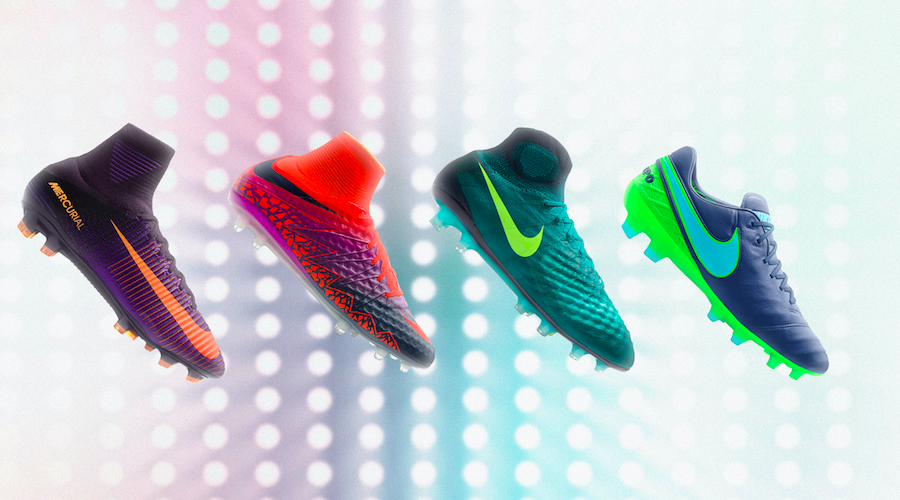Nike Inc. reported earnings in the first quarter ended August 31 that easily topped estimates on a 10 percent revenue gain on a currency-neutral basis, but futures orders gains slowed notably from recent quarters.
The company’s first quarter 2017 results were as follows:
- Revenues up 8 percent to $9.1 billion, 10 percent growth excluding currency changes
- Diluted earnings per share up 9 percent to 73 cents compared to prior year
- Worldwide futures orders up 5 percent, 7 percent growth excluding currency changes
- Inventories as of August 31, 2016 up 11 percent
Nike said strong global demand drove double-digit currency-neutral revenue growth internationally in the first quarter and 6 percent revenue growth in North America. Diluted earnings per share for the quarter were 73 cents a share, up 9 percent, driven by strong revenue growth, operating overhead leverage, a lower effective tax rate and a lower average share count, partially offset by a gross margin decline and higher demand creation expense in an Olympic quarter. Wall Street’s consensus estimate had been 56 cents.
“Fueled by an incredible summer of sport, Nike delivered strong global growth and led the industry through disruptive innovation,” said Mark Parker, chairman, president and CEO, Nike Inc. “Q1 also showed how we’re amplifying every category through sports style innovation, transforming retail by connecting the digital and physical experience and ushering in a new Era of Personalized Performance – through product, consumer connections and our supply chain. Nike’s strategic investments in these growth opportunities continue to deliver long-term value to our shareholders.”
First Quarter Income Statement Review
Revenues for Nike Inc. rose 8 percent to $9.1 billion, up 10 percent on a currency-neutral basis. Wall Street had expected $8.85 billion on average. Revenues for the Nike Brand were $8.5 billion, up 10 percent on a currency-neutral basis, driven by double-digit growth in Greater China, Western Europe, Emerging Markets, Central & Eastern Europe and Japan, including strong growth in Sportswear, Running and the Jordan Brand. Revenues for Converse were $574 million, up 4 percent on a currency-neutral basis, mainly driven by growth in North America, which was slightly offset by declines in Europe and Asia Pacific.
Gross margin declined 200 basis points to 45.5 percent, as higher average selling prices were more than offset by several temporary or discrete items including foreign exchange, a shift of expenses from operating overhead to cost of goods sold, a higher off-price mix and the impact of exiting the Golf equipment business.
Selling and administrative expense increased 12 percent to $2.9 billion. Demand creation expense was $1 billion, up 25 percent, reflecting investments in key sports events. Operating overhead expense increased 6 percent to $1.9 billion, reflecting continued growth in the direct-to-consumer (DTC) business and targeted investments in operational infrastructure and consumer-focused digital capabilities.
Other income, net was $62 million, primarily comprised of net foreign currency exchange gains. For the quarter, the company estimates the year-over-year change in foreign currency-related gains and losses included in other income, net, combined with the impact of changes in exchange rates on the translation of foreign currency-denominated profits, increased pretax income by approximately $3 million.
The effective tax rate was 2.5 percent, compared to 18.4 percent for the same period last year, primarily due to a one-time benefit related to the resolution with the U.S. Internal Revenue Service of a foreign tax credit matter.
Net income increased 6 percent to $1.2 billion, as revenue growth and a lower effective tax rate more than offset lower gross margin and higher demand creation expense, while diluted earnings per share increased 9 percent from the prior year to 73 cents, reflecting nearly a 3 percent decline in the weighted average diluted common shares outstanding.
Balance Sheet Review
Inventories for Nike Inc. were $4.9 billion, up 11 percent from August 31, 2015, driven by a 3 percent increase in Nike Brand wholesale unit inventories, increases in average product cost per unit and growth in the DTC business.
Cash and short-term investments were $4.8 billion, $621 million lower than last year, as growth in net income and proceeds from the issuance of debt in the second quarter of fiscal 2016 were more than offset by share repurchases, investments in working capital and infrastructure, higher dividends and a reduction in collateral received from counter-parties to foreign currency hedging instruments.
Share Repurchases
During the first quarter, Nike Inc. repurchased a total of 19 million shares for approximately $1.1 billion as part of the four-year, $12 billion program approved by the board of directors in November 2015. As of August 31, 2016, a total of 39 million shares had been repurchased under this program for approximately $2.2 billion.
Futures Orders
As of August 31, 2016, worldwide futures orders for Nike Brand athletic footwear and apparel scheduled for delivery from September 2016 through January 2017 totaled $12.3 billion, 5 percent higher than orders reported for the same period last year, and 7 percent higher on a currency-neutral basis.
On a currency-neutral basis, futures orders had been ahead 11 percent at the close of the fiscal 2016 fourth quarter, 17 percent at the the close of the fiscal 2016 third quarter, 20 percent at the close of the fiscal 2016 second quarter and 17 percent at the the close of the fiscal 2016 first quarter.
















